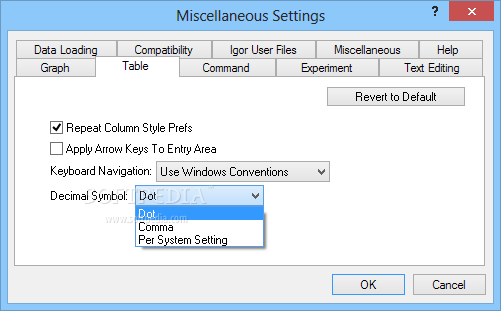

The sounds may be intermittent, or they may be constant. Others might hear a roaring, buzzing, hissing or clicking inside their heads. Then I realized that the low-amplitude peaks are simply sampled on either side of the peak value, and the high amplitude peaks are sampled almost at the peak value.Some people have a ringing in their ears. I was really surprised to see Larry's fit reproduced it perfectly, because there isn't anything in the fit function that does that. You can a more benign version of this in the original data and Larry's fit: the envelope of the data appears to have a bit of ringing over 4 to 5 periods of the basic high-frequency sinusoid. Consequently, the high-frequency sinusoid is way undersampled, and it looks like it has way too-low frequency. By default, the auto-destination wave from a curve fit (that's what you get if you select Auto Trace in the Output Options tab of the Curve Fitting dialog, or if you use QuickFit) has 200 points. Something that's worth noting: I think your original problem with the frequency being off by an order of magnitude was most likely caused by aliasing. I'm not sure how Larry got this fit to work where I didn't! My guess is that the initial guess of the frequency is pretty critical. Managed to do the fit over a nice physical range, got my timeconst. I will leave others to suggest how you might get the envelope.
#IGOR PRO REMOVE RINGING AND OVERSHOOT HOW TO#
I think you're going to have to figure out how to get the envelope of your data and fit that. The parts that are out of phase will contribute maximally to chi-square the easiest and most stable thing for a fit to do about that is to reduce the amplitude! So you wind up with a fit that has zero amplitude and has the y0 offset adjusted so that the resulting flat line passes through the middle of your data. The slightest little error in the frequency will cause parts of the fit curve to be 180 degrees out of phase, and parts to be in phase. I was looking at about 0.00043 to about 0.0013.ģ) It is extremely difficult to fit a sin function to so many periods. Put cursors on the graph to show that part of it that you want to work on (presumably the part after that saturated bit, before the ringing gets to be the dominant factor). Once you do that, and use the correct frequency (about 1.853e6) the sin wave matches pretty well.Ģ) I think you did your FFT of the entire data set, but the part you're interested in is a small part of that set. You have a pretty challenging problem there.ġ) You need to change your equation to account for the fact that sin() takes radians:į ( time ) =D + A * sin (B * time ) * exp (- time /C ) I've spent some time playing with your data. additionally, is it possible to remove the second FFT component, of the ringdown? I hope my question isn't too novice, I haven't had time to familiarize myself with Igor yet, and I'm running on a short deadline.Īny help, or references to sources on this subject would be much appreciated. When I click 'do it' the fit doesn't error, but produces a much lower amplitude wave.Īm I doing something wrong, I would really appreciate some manner of explanation of Igor's curve fitting abilities? Substituting the FTT computed frequency in seconds^-1 for C makes the sine wave several orders of magnitude lower in frequency than the data. I'm having issues getting Igor to fit this function, I have suggested values but there's a problem. Where A is y-offset, B is initial amplitude, C is frequency, & D is the time constant. I have tried to fit a function to the data, in order to extract the time constant of the exponential. A FFT reveals the natural frequency of the NMR signal. The actual data, has two exp decaying sine waves superimposed (the other is ring down from the equipment, not important). I would like to do a fit to some oscilloscope data, so Igor interprets the x axis as time. This means a sine wave, which decays exponentially.
#IGOR PRO REMOVE RINGING AND OVERSHOOT FREE#
What I have, is a Free Induction Decay signal from an NMR experiment.

Very new to Igor, and I have a week until a project deadline. Wide-Angle Neutron Spin Echo Spectroscopy.


 0 kommentar(er)
0 kommentar(er)
